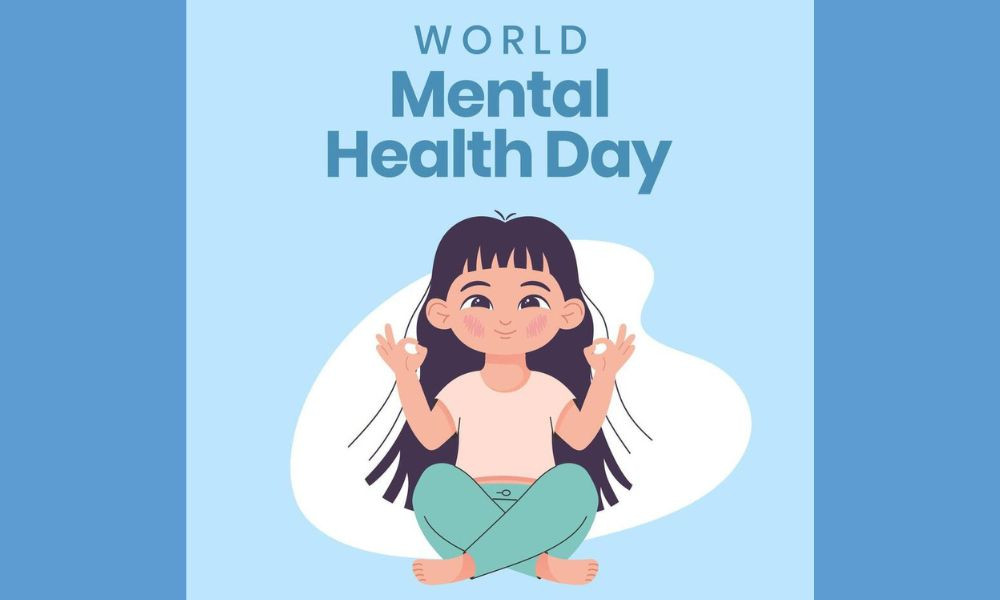
Illustration: Vecteezy
The world celebrates World Mental Health Day on October 10 and the International Day of Girl Child on October 11 every year - two days that are often viewed as separate, yet inextricably linked. One calls us to look within, to face the unseen struggles of the mind; the other calls us to look outside, to equality and opportunity for girls. But these two struggles cannot be separated. If we do not first protect the emotional foundations of strength, how can we empower girls to lead, learn and dream? When girls are taught to be resilient before they are trained to be expressive and to work before they are allowed to rest, empowerment is a brittle ideal. True liberation should begin from within, within our minds.
The numbers on a global scale are ominous. According to the World Health Organisation (WHO), one in every seven aged between 10 and 19 years has a mental health disorder, making it a significant cause of illness and disability among adolescents. The United Nations Children’s Fund (UNICEF) estimated in 2019 that 166 million adolescents globally suffer from diagnosable mental health conditions, and nearly half of all disorders start before 18 years. The gender difference is large and consistent: young women are 1.7 times more likely to suffer from anxiety or depression than young men. In the UK, the prevalence rate of mental health problems is 26% for women aged 16-24 years compared to 9% for young men (Mental Health Foundation, 2023). These inequalities are not limited to Western societies; across South Asia, adolescent females feel increasing emotional pressure due to shifting family norms, digital penetration and cultural double standards.
In Bangladesh, this relationship of development and pressure is played out in deeply human terms. Today’s girls are growing up not only in an age of increased access to education and connectivity but also in an age of increased social scrutiny. They are told that they can be anything they want but are constantly reminded every day of what they cannot be: too loud, too confident and too ambitious. Many people feel like they have to succeed to be loved and approved of, which comes through success, not simply who they are. Behind the smiles in school photos or the staged happiness on social media lies a resigned exhaustion— a tiredness that comes from the pressure to do everything well at the same time. During the pandemic, as the educational sector shifted to the online mode, thousands of Bangladeshi girls found themselves isolated, anxious and with an increase in domestic work. Social media became both an escape and a mirror that showed unachievable images of perfection.
Withdrawal or irritability was wrongly perceived as laziness by many parents who themselves were not familiar with the language of mental health. Thus, a generation of girls was taught to suffer silently, learning the art of looking good.
This silence is not isolated to Bangladesh; it is a part of a universal emotional epidemic in the youth women worldwide. Researchers refer to it as “the performance of resilience”, the acquired skill of being seemingly unbreakable while breaking on the inside. In cultures where perseverance is a virtue, many girls internalise the notion that it is weak to show that they are upset. But this emotional repression takes a toll. Studies have found that depression and anxiety, if left untreated, can interfere with education, leave people more vulnerable to abuse and even affect physical health through chronic stress. Its economic cost is equally astounding. WHO estimates that productivity losses due to depression and anxiety cost the global economy over US$1 trillion every year. Beyond the numbers, the price is moral: the silent loss of potential, creativity and confidence.
When we really want to celebrate both days, we should start with something simple but powerful, and that will be listening. Listening as an act of solidarity, not the type of listening that runs to correct or give a piece of advice. It involves providing environments at home, in schools and in communities where the girls can be able to discuss confusion or pain with no sense of shame. There is a crucial role of teachers, friends and even parents: the teacher who notices a reticent student, the friend who remains with him or her without questioning, and even the parent who lets the tears roll without making inquiries. Even schools can contribute to it because emotional literacy can be taught, to name emotions, cope with stress, and find somebody to talk to when it is too serious.
Awareness alone will not make changes. Structural steps are needed. Investing in adolescent counselling by governments should be considered, particularly in countries where mental health provision is minimal. Community health clinics must employ certified counsellors, and even digital platforms, the very sources of constant pain, can be turned into safe environments with programmes led by young people themselves. Secondary schools in Bangladesh need to include mental health education, as emotional strength is as important as intellect. The next generation of girls will come of age in a world shaped by AI, digital capitalism and climate anxiety.
They will be strong not because of the degrees and titles they hold, but because of their compassion, boldness and understanding of how to care for themselves and their communities.
The writer is an Assistant Professor in the Department of Philosophy at IUBAT and currently on study leave, residing in Oslo, Norway


